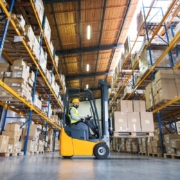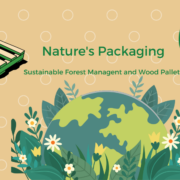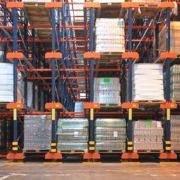Combo and Re-manufactured Pallets: A pathway to sustainability and value

If you haven’t heard about combo and re-manufactured wood pallets, you just might be missing out on an important opportunity. Re-manufactured custom and standard wood pallets can provide great value and enhance the sustainability of your supply chain. They can be more cost effective than new pallets, and provide consistency as well as the opportunity for customization. As circular economy supporters have noted, refurbishing and re-manufacturing existing materials are more sustainable options than end of life recycling. The construction of re-manufactured pallets from recycled components is a green solution that can enhance corporate sustainability performance and improve the bottom line.
Combination pallet (Combo) – a wood pallet that is manufactured from a combination of new and recycled wood components.
Remanufactured pallet (Remand) – a wood pallet that is manufactured completely from recycled wood components. Some pallet companies use other terminology, so be sure to check with your pallet provider.
Re-manufactured pallets present a new opportunity
Since it’s beginning, the wood pallet recycling industry has been responsive to new ideas and opportunities. It is hard to believe today, but back in the 1980’s many companies did not reuse pallets. As stockpiles of empty used pallets accumulated at plants and warehouses across the country, a light bulb clicked on. Entrepreneurs recognized that they could refurbish and sell them. All it took was customer acceptance that more affordable used pallets could fill their needs. With that buy-in, the recycled pallet market began to boom.
But what happens when wood pallets can no longer be economically repaired? One way that pallet recyclers address this situation is to dismantle them. The usable boards and stringers (components) can be used to repair other pallets. But over time, pallet recyclers found themselves with excess pallet material and not enough recycled pallets to meet all the demand in the marketplace. Then in the 1990s, a few companies began to build combo pallets, a practice that allowed them to best utilize surplus pallet parts. And more recently, re-manufactured pallets have emerged as an outlet for the excess material recovered from unrepairable pallets. The re-manufactured pallet represents a new stage in the evolution of the pallet recycling industry.
What are the advantages of re-manufactured pallets?
As recycled pallets can accumulate from a wide variety of sources, they can vary somewhat in deck board thickness and placement, pallet height and other details. Remanufactured pallets, on the other hand, offer the opportunity for greater consistency. Recyclers typically sort recovered deck boards as “thins” (generally boards ⅜” – ½”) or “thicks” (typically boards 5/8″ – ¾”). Some recyclers also resize recovered stringers to provide uniform height. As a result, re-manufactured wood pallets can provide a more consistent product than recycled.
There are additional benefits. Remanufactured pallets are not limited to standard sizes. Remanufactured pallets can also be built to custom sizes – although they are typically limited to sizes the same or smaller than the recovered material. With remanufacturing, the buyer also has much more control over the specification regarding board count and placement as well as regarding nailing. To be clear, the degree of precision does not match that of new pallets but can be a step up from recycled pallets.
One of the challenges for re-manufacturing pallets is that it is still often a manual process, with pallets nailed together by workers using nail guns. However, the landscape is changing. Automated nailing equipment designed for re-manufactured pallets is increasingly available, a development that should make them more widely available in the future.
In the right application, re-manufactured pallets can deliver solid value and a sustainably superior solution. Talk to your pallet provider to see if re-manufactured pallets could be a fit for your supply chain.










